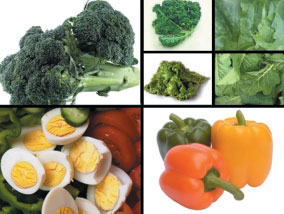Healthy vision offers patients more than good eyesight; for many, their quality of life is greatly diminished if their vision is less than adequate. For example, needing help reading a menu or being nervous to drive at night can limit a patient’s independence and social interactions.
Zeaxanthin is a member of a group of compounds known as carotenoids, referred to as a “superior antioxidant” because of its chemical structure. In the Zeaxanthin and Visual Function (ZVF) study authors remark that “the macula selectively places [Zeaxanthin] in its Foveal center, where the greatest protection is needed, which is the last to degenerate”. Fovea is a small pit or depression in the center of the macula lutea, composed of slim elongated cones, it is the area of clearest vision, because here the layers of the retina are spread aside, permitting light to fall directly on the cones. This means Zeaxanthin is responsible for protecting the crisp, clear central vision needed for reading, seeing faces and other daily tasks. While this antioxidant can be found in orange peppers, corn and spinach. Many Americans do not consume enough of these foods in their diets.
Lutein – like Zeaxanthin, lutein is also classified as a carotenoid. Accumulated by the retina in the peripheral aspect of the macula, this antioxidant protects peripheral vision and low contrast visual acuity. Lutein can be found in dark leafy greens like kale, spinach, broccoli and collard greens, again Americans do not consume a diet that includes leafy greens. The researchers in the ZVF study stated that despite the fact that lutein is at least four times as prevalent as Zeaxanthin in human serum, there is a greater concentration of Zeaxanthin in the central portion of the macular by two times, simply meaning that the ratio of Zeaxanthin to lutein in the macular pigment is 2 to 1. As the body ages, greater protection is needed for the sensitive cells in the retina to maintain healthy vision.
Meso- Zeaxanthin is also a carotenoid. Carotenoid are naturally occurring plant pigments found in nature. Some researchers believe MZ is rarely found in dietary sources and is believed to be formed at the macula by metabolic transformation of ingestion of the other carotenoids. More recent researchers believe MZ is found in eggs from hens fed MZ is one source of this carotenoid as is 21 species of edible fish (such as sea bass, rainbow trout and Atlantic salmon), shrimp and sea turtles. MZ is believed protect against the development and progression of age related macular degeneration (AMD) and is related to its ability to filter damaging visible (blue) light.
Sources:
www.medical-dictionary.thefreedictionary.com
Photo:

